Final Critique
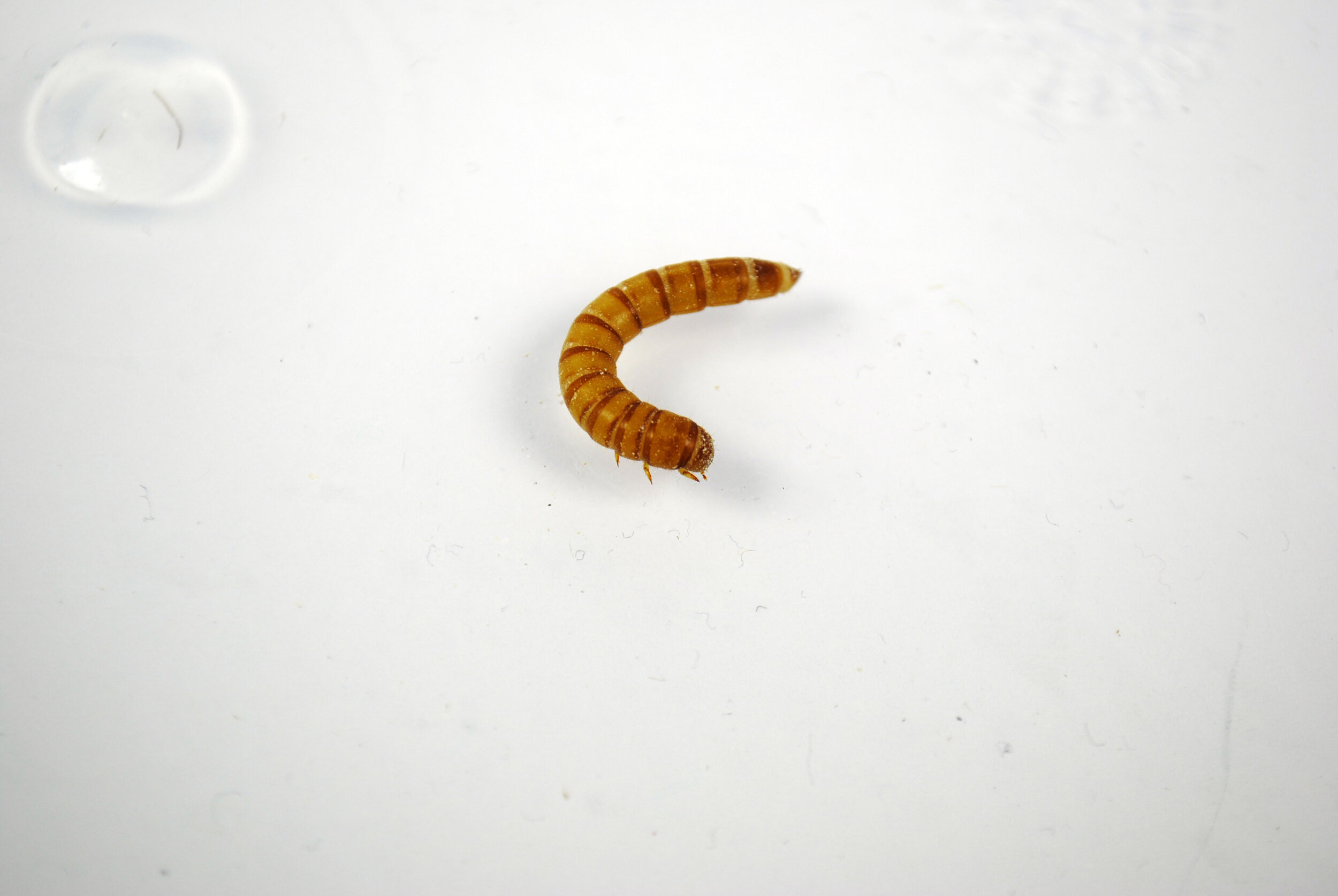
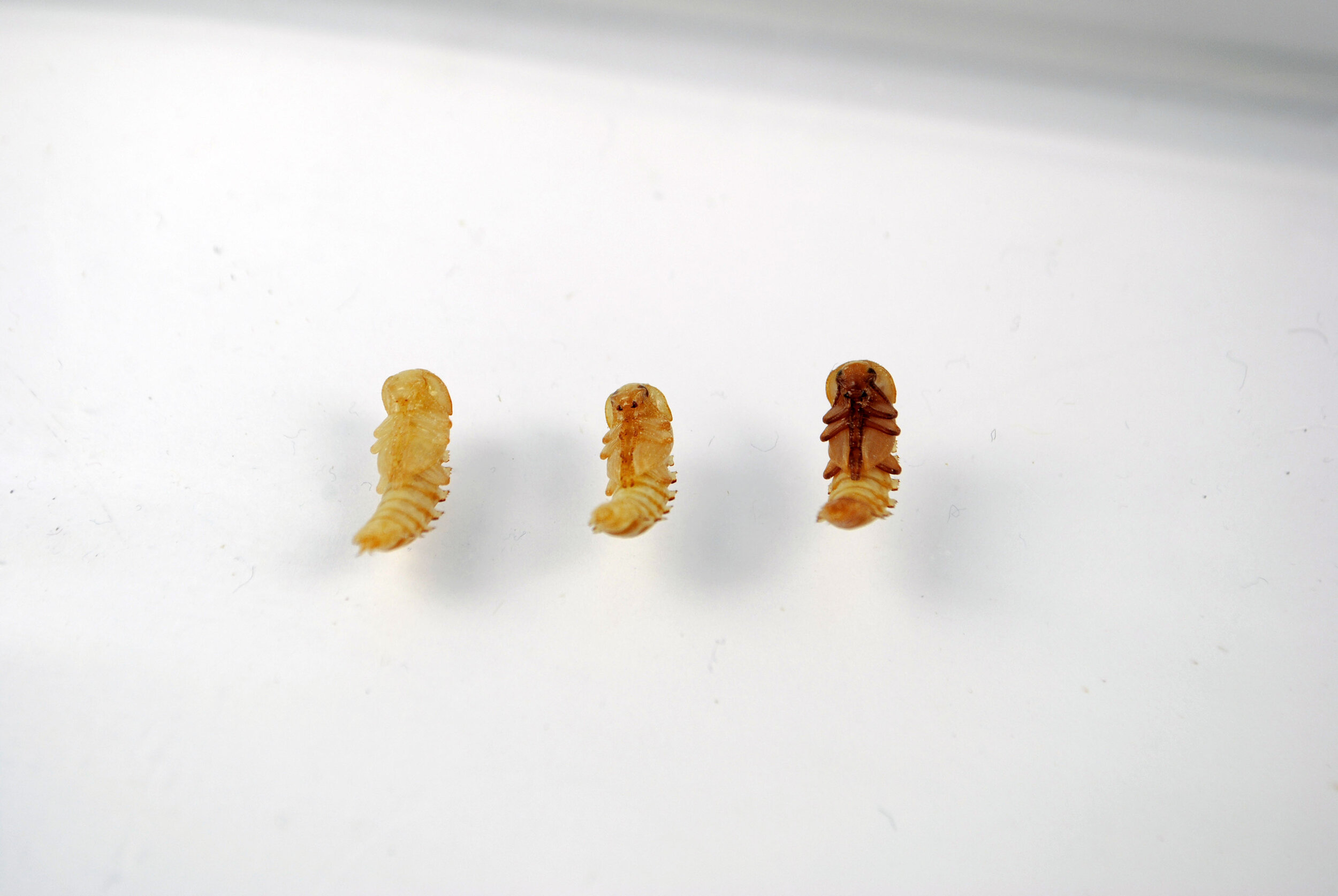
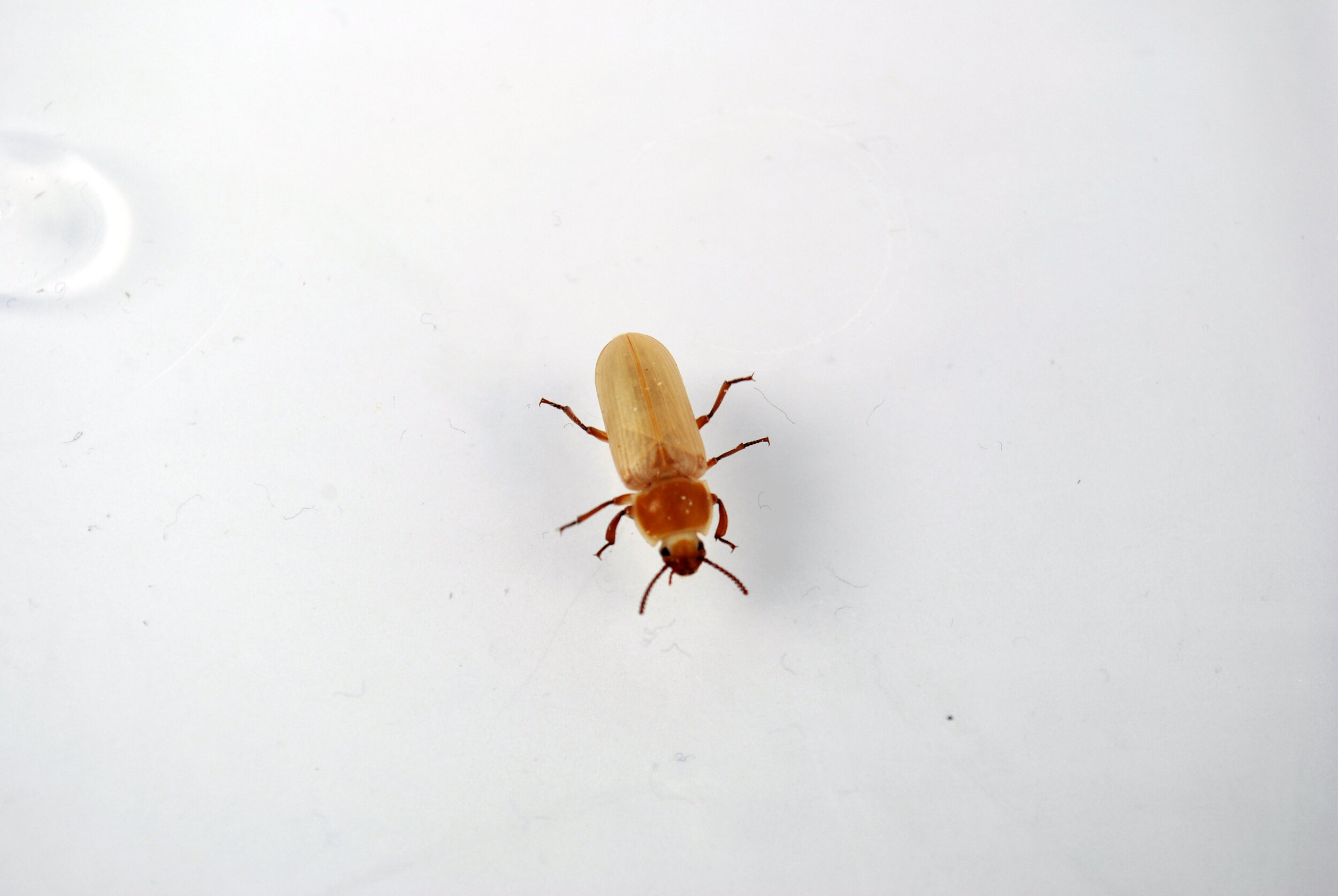
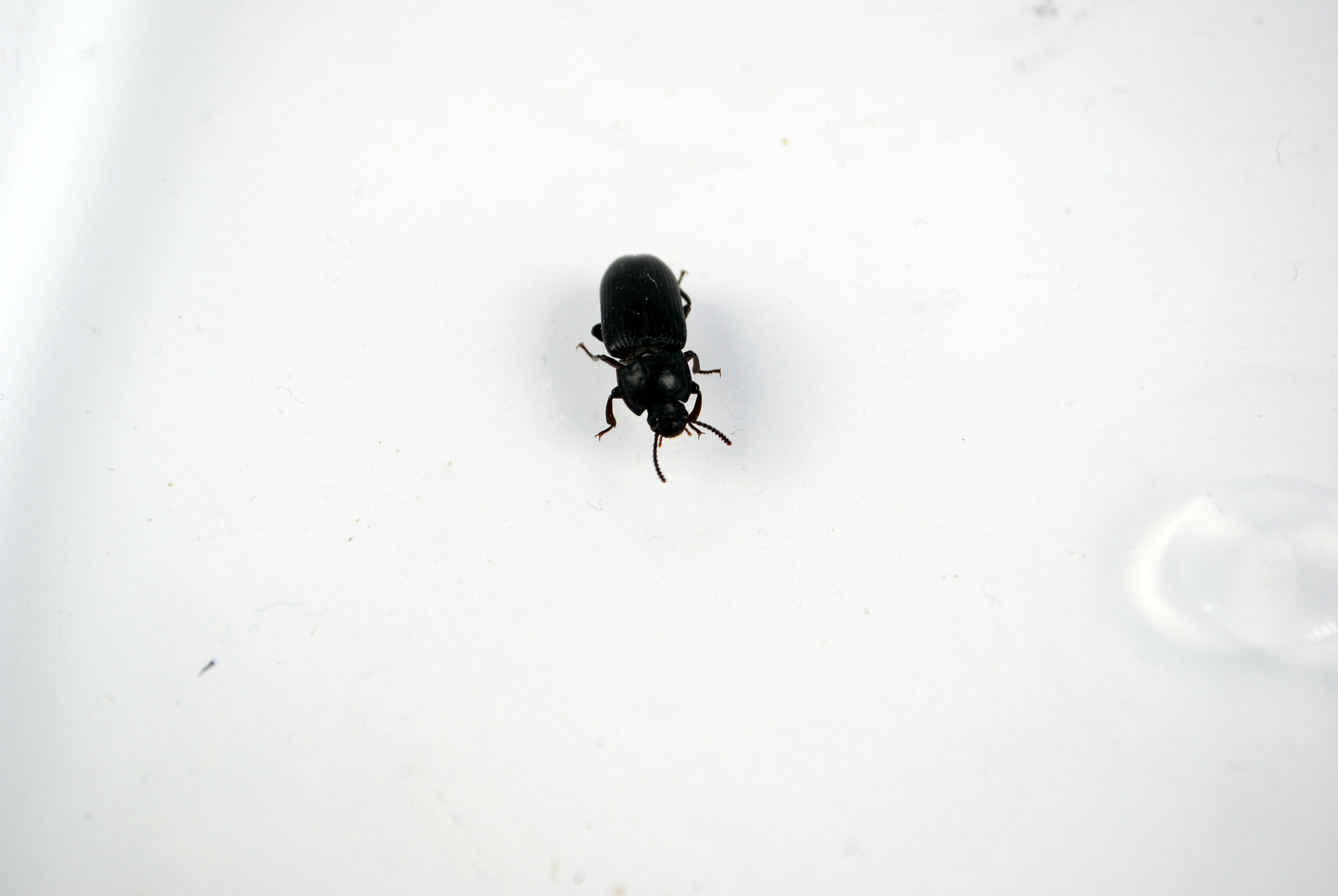
The rush with finals and fabricating my display before the gallery exhibition left me fatigued and without the desire to write one last blog post wrapping up my thesis. Here I am, over a year and a half later, already working at Ecovative Design for over a year, with enough sleep and recoup to finally tie up the loose ends. Thank you for your patience.
After the terra-cotta inserts were glazed and ready, I began fabricating the stand out of white oak and gave steel legs sourced second-hand a fresh patina. I landed upon the accordion style of a sewing box because the opening mechanism aligned all layers or separated to view all contents with a simple pull forward. This made it easy to hide or view all stages of the darkling beetle at once.
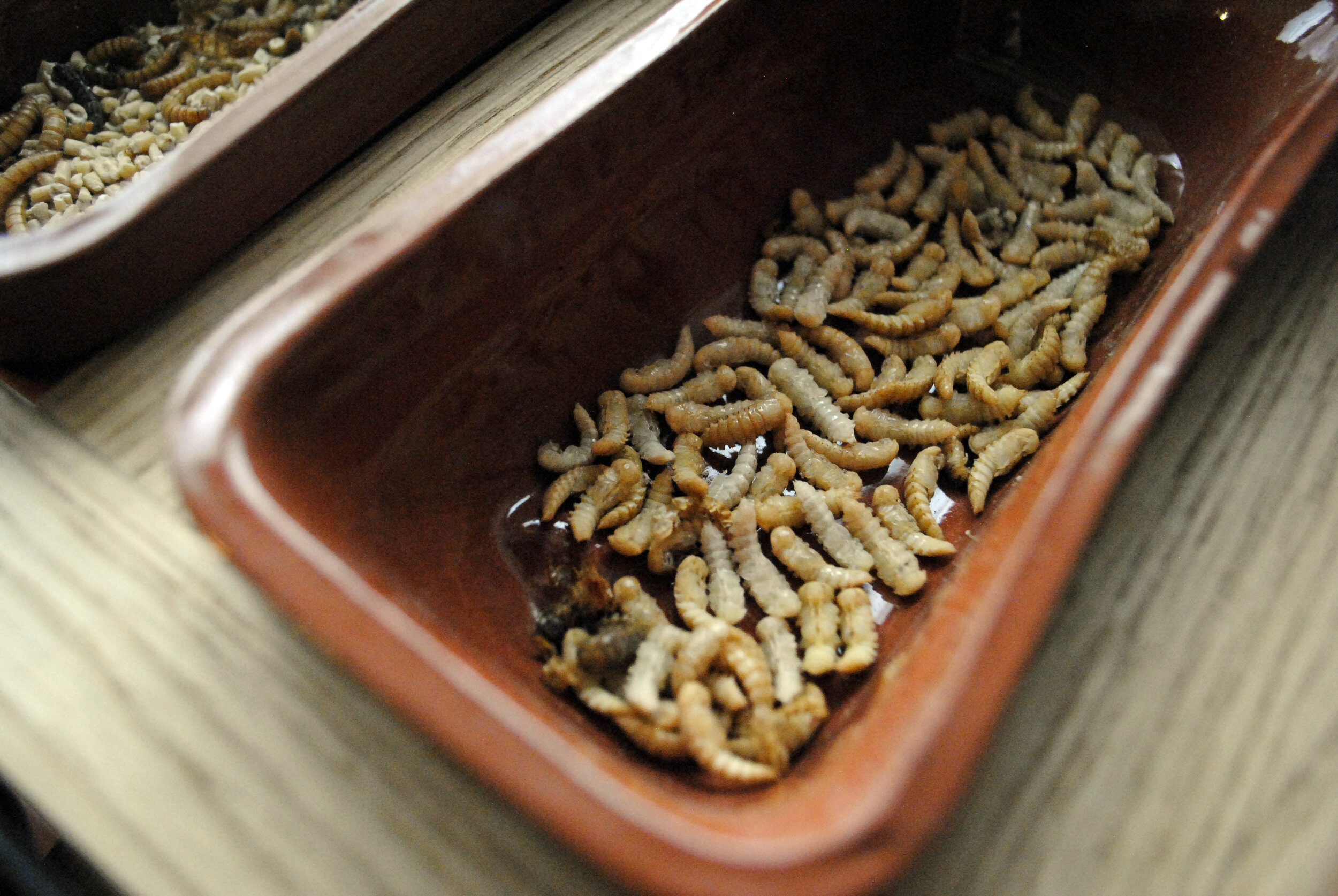
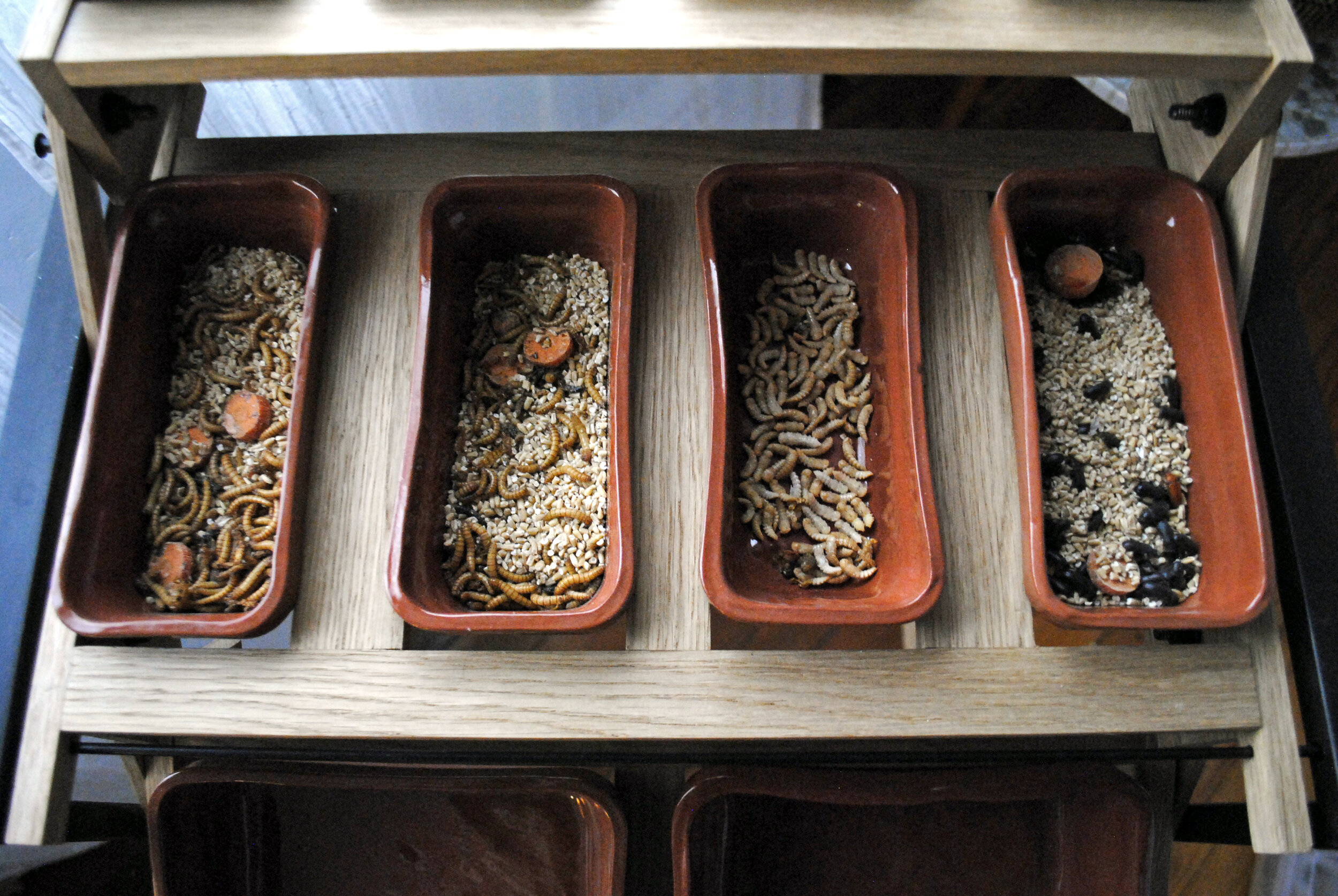
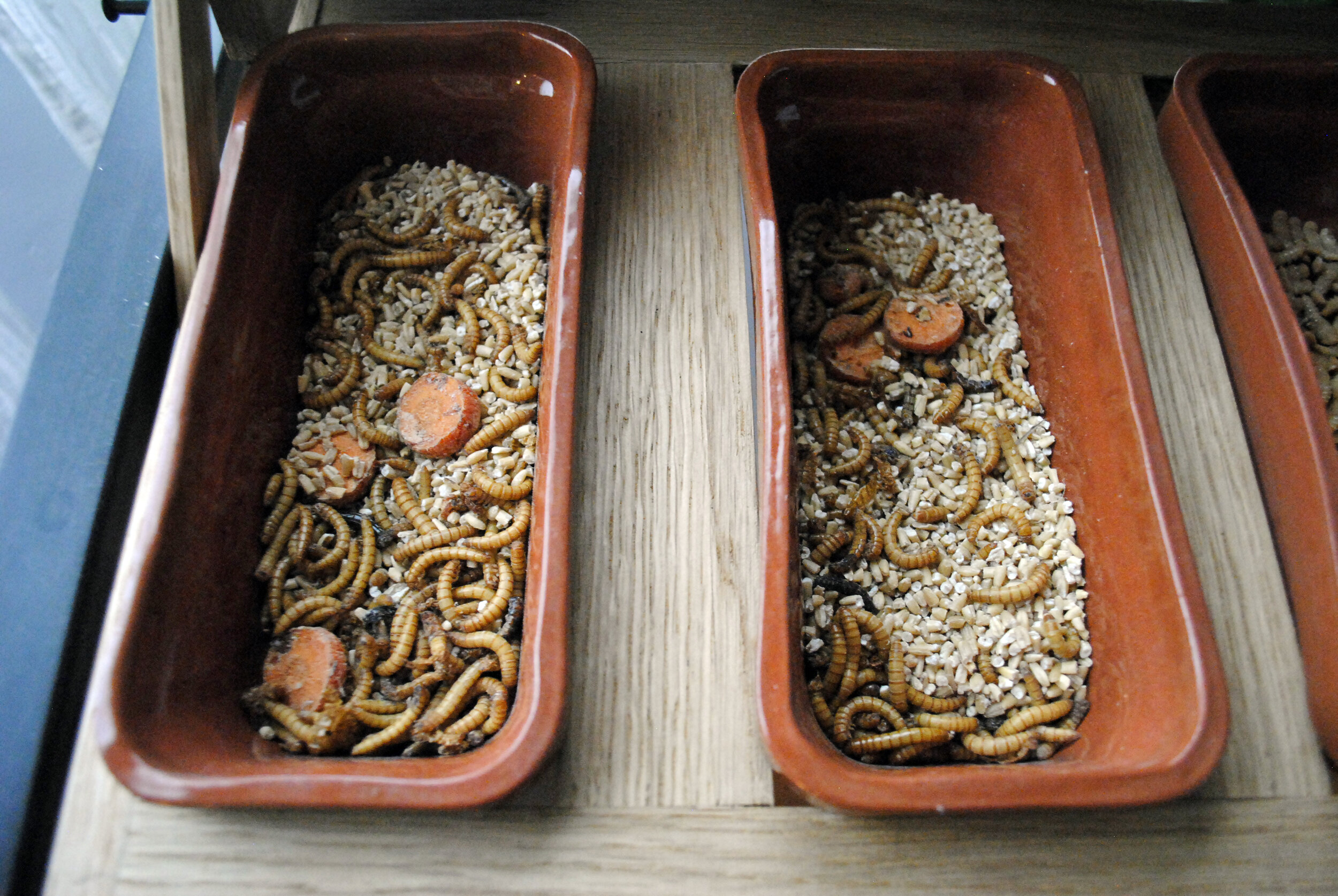
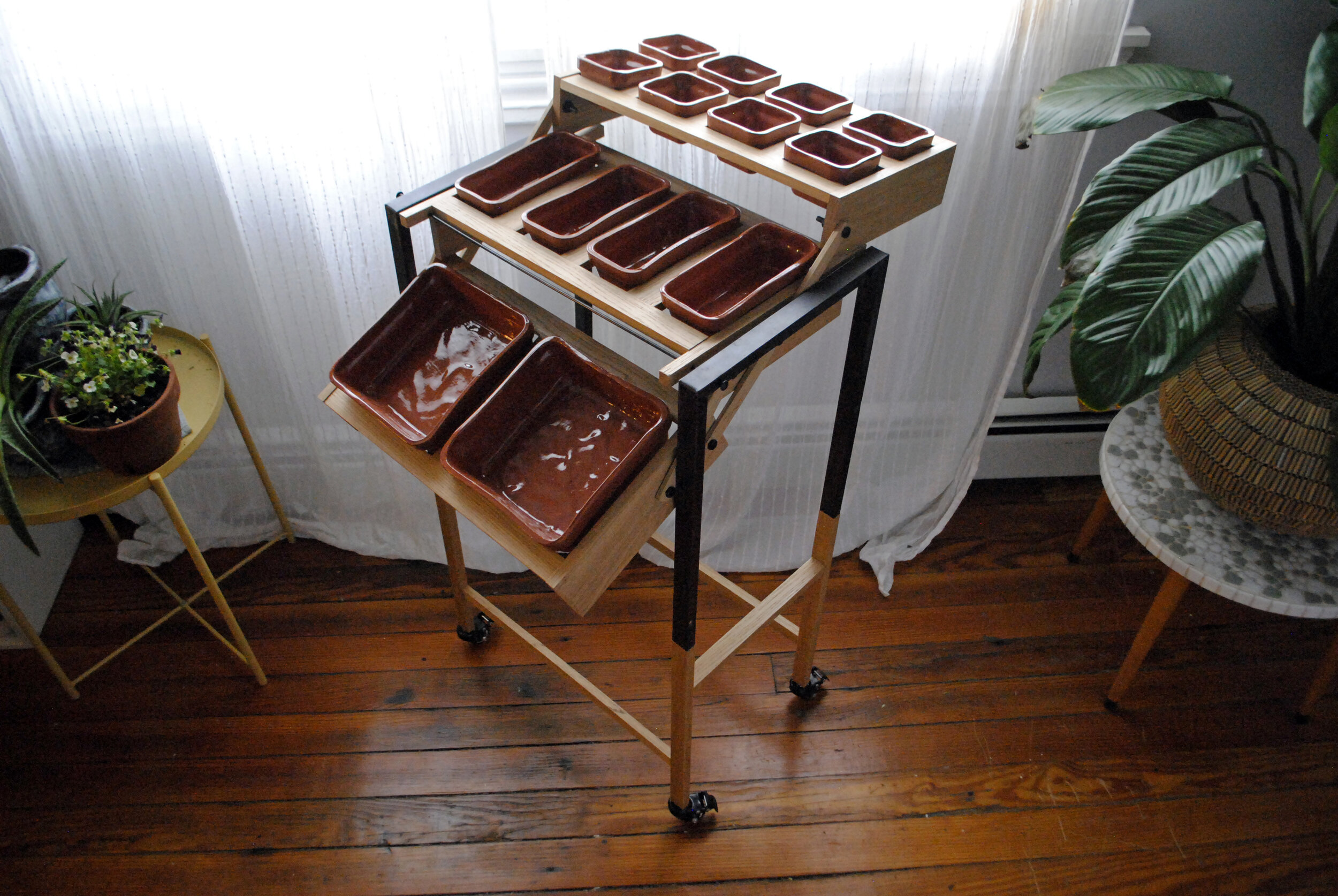
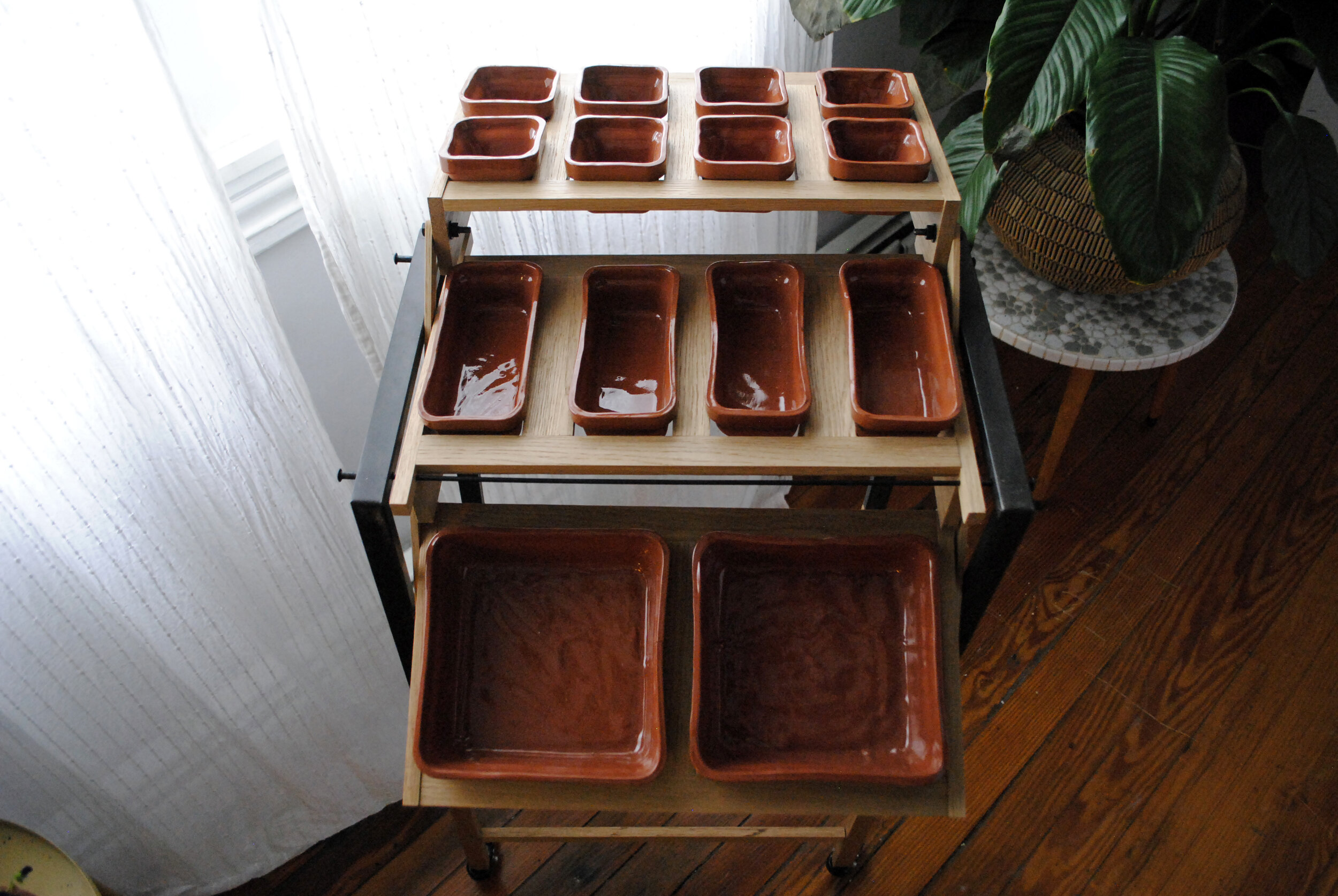
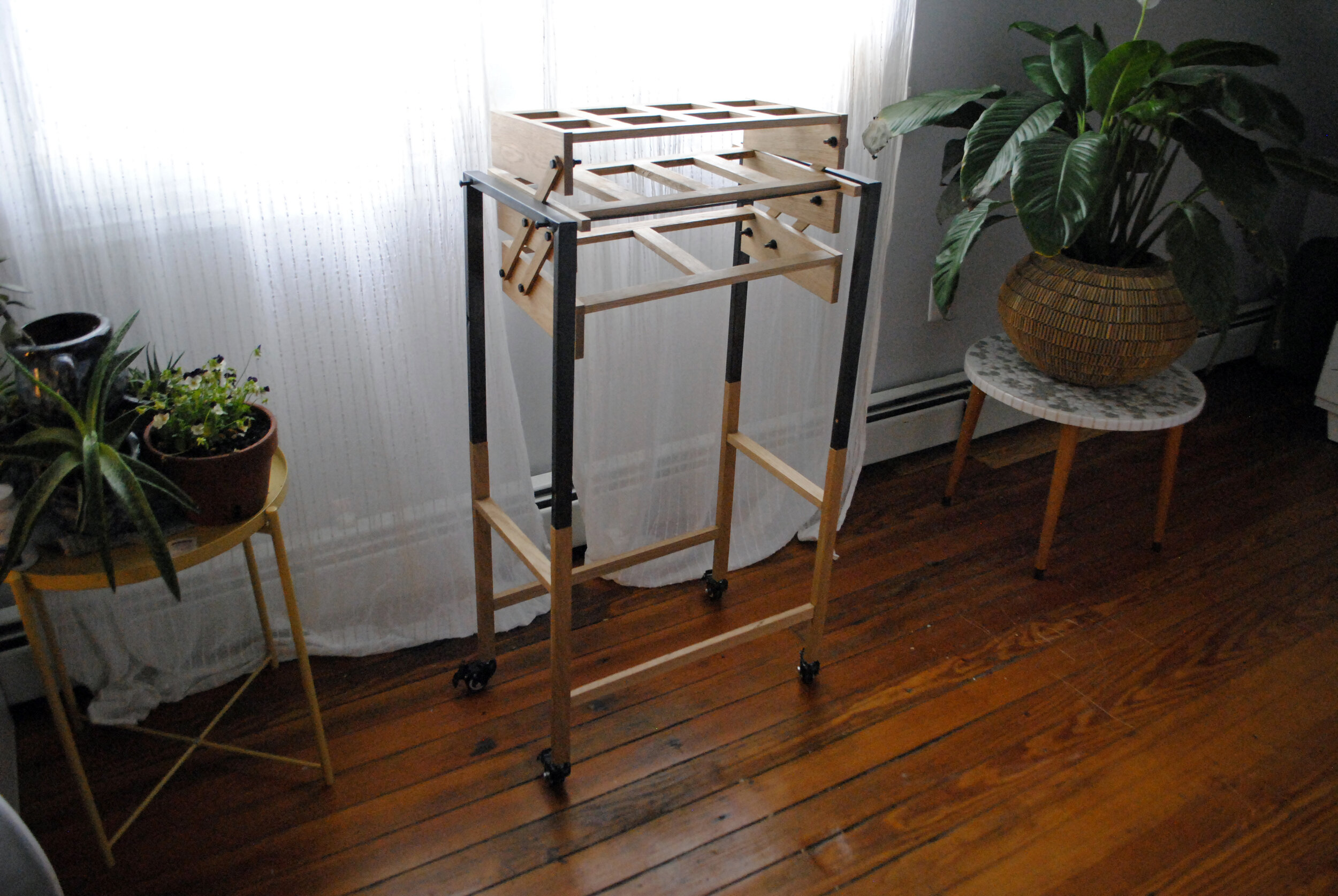
During the preliminary stages, when I wasn’t researching I was touring waste treatment facilities and conducting interviews with the sustainability branch in Providence’s Public Works sector with the expectation of creating a documentary film at the end of the assignment. As my thesis narrowed, and my influences took effect, I realized the impact a quick graphic or narrative has on conveying digestible amounts of information to a wide range audience. I don’t have to captivate and seat them for a film, I could create a comic book. I was in a environmental graphic novel class outside of my thesis, so I thought to apply the power of speech through sequential images and to practice what I’ve learned. This is a common trait I exhibited as a student, combining learnings from multiple classes, because I see the interconnectedness between them. I recommend blending the lines between your education too.
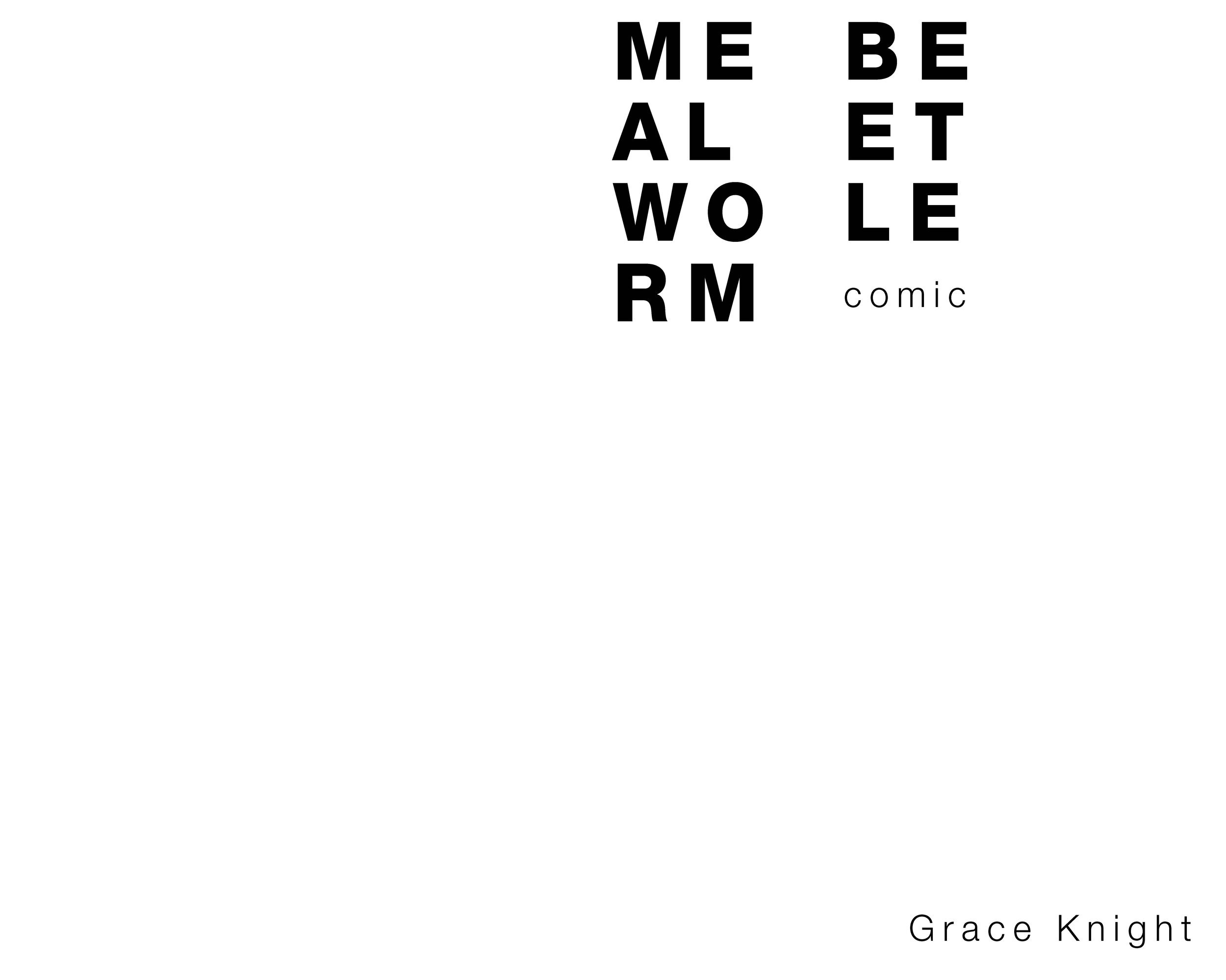

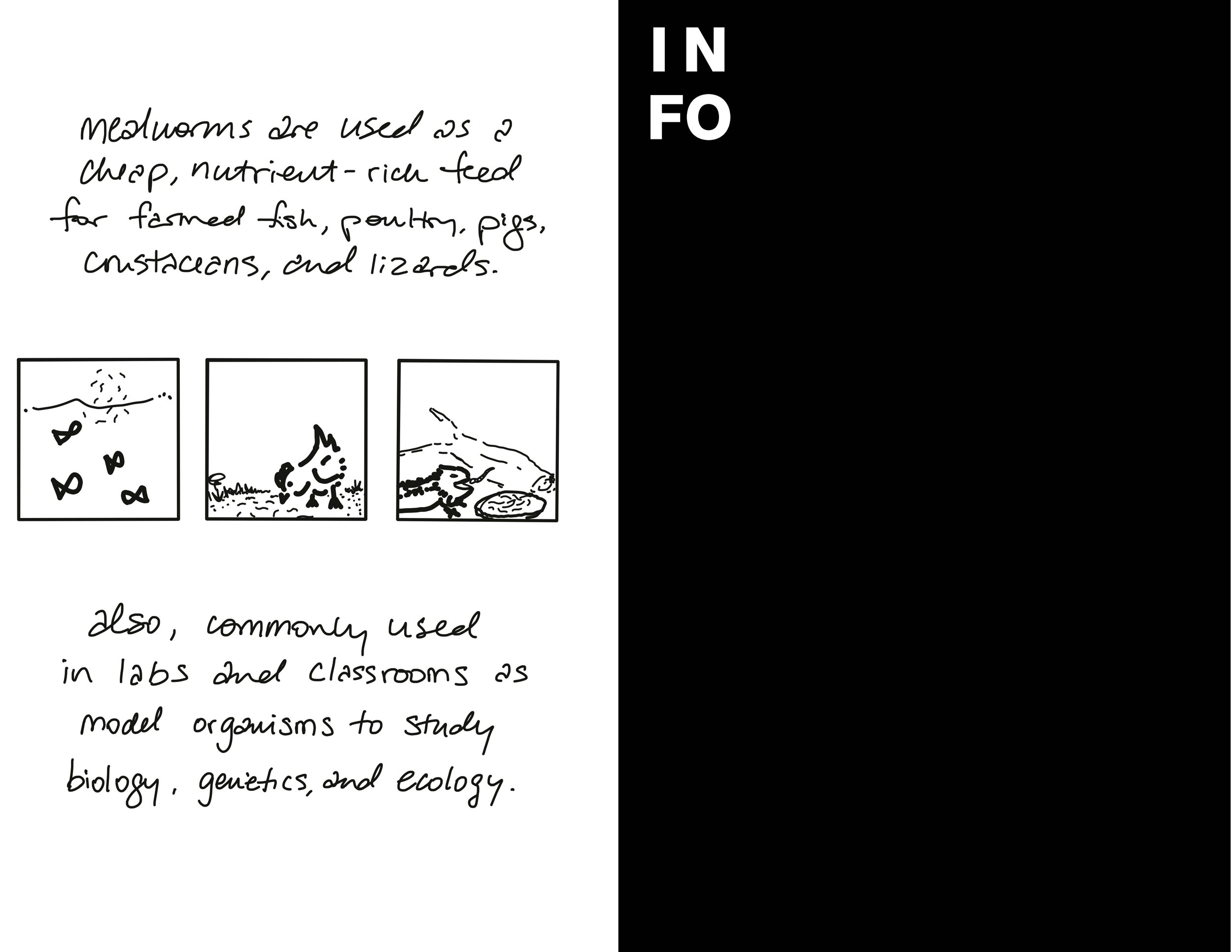
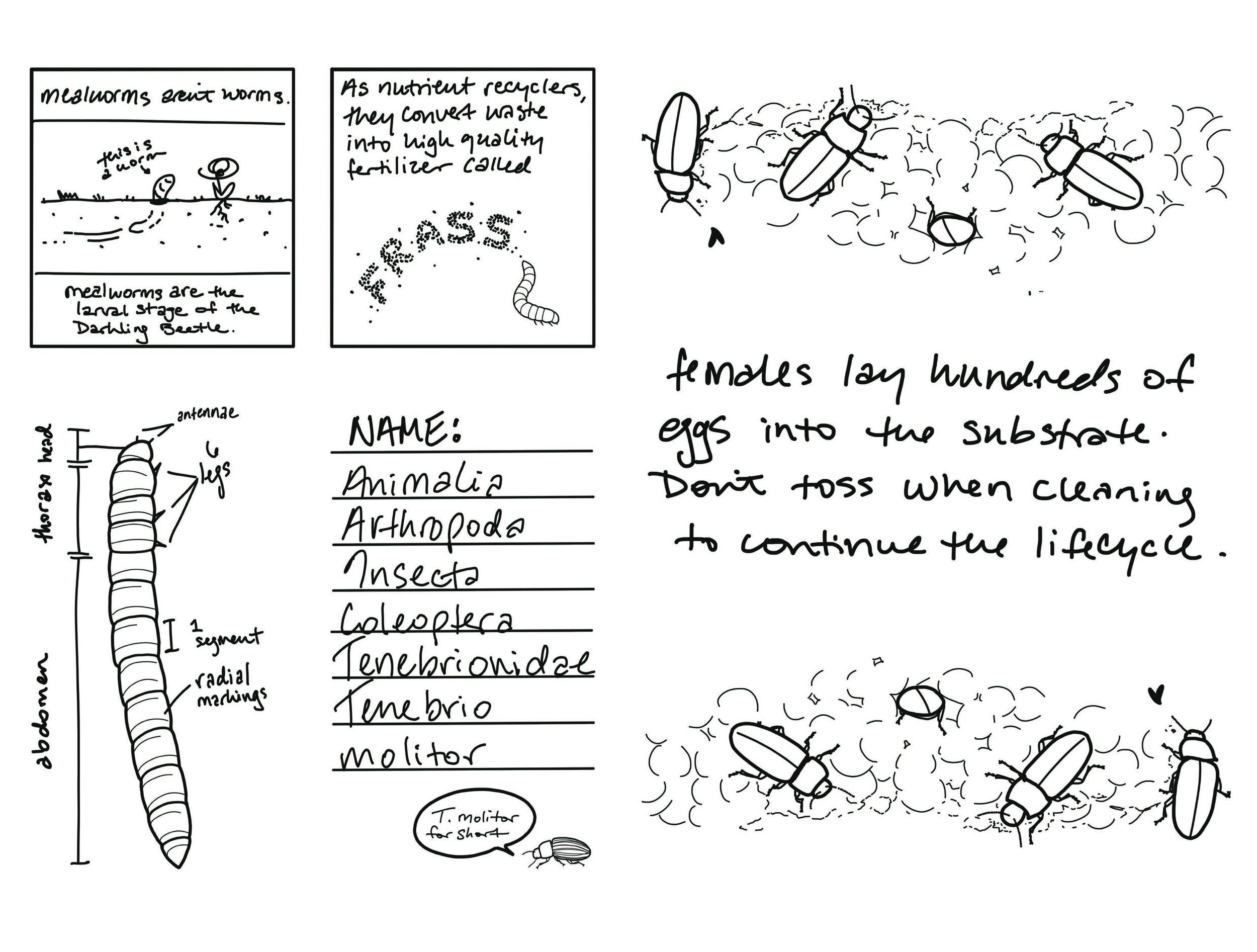
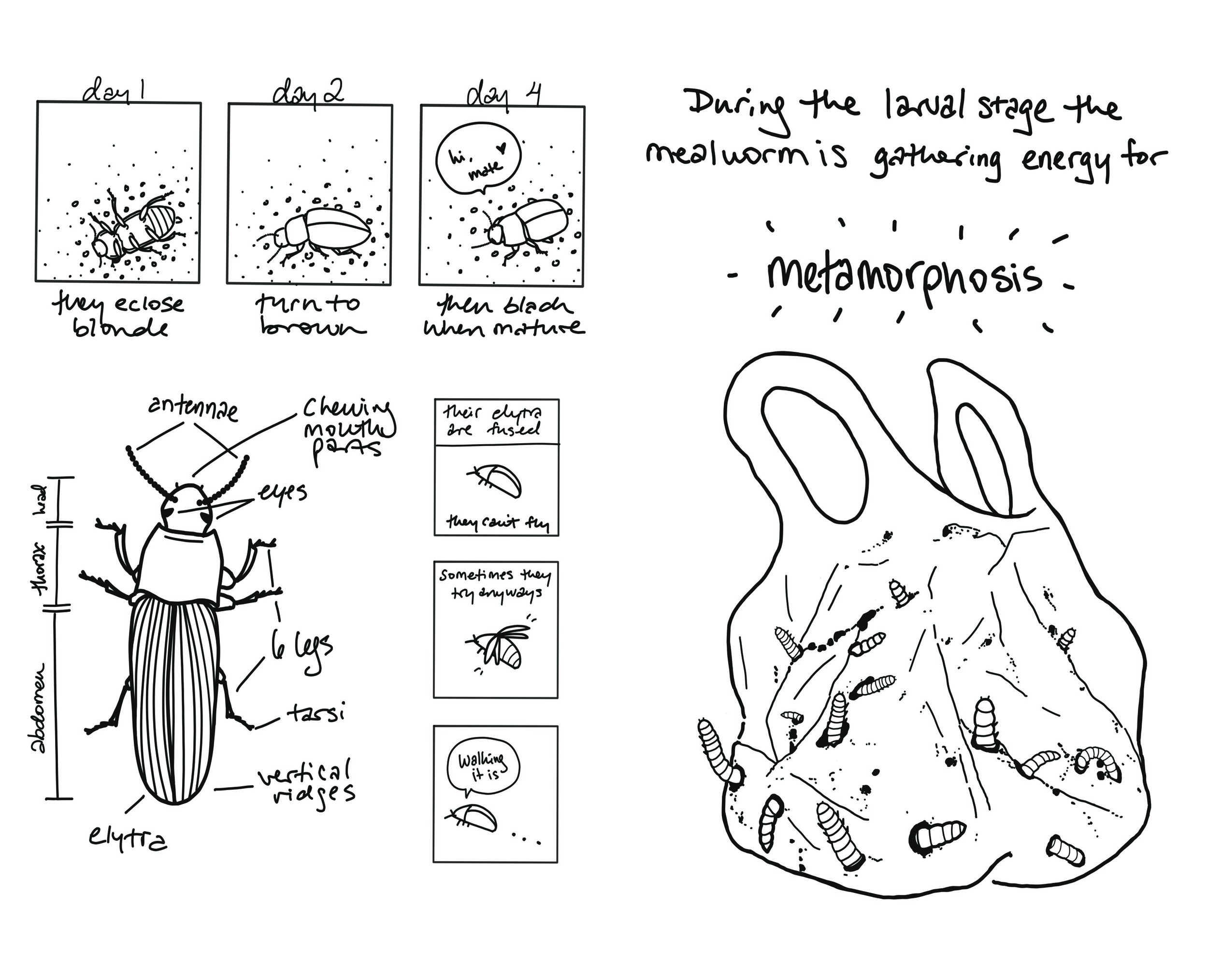
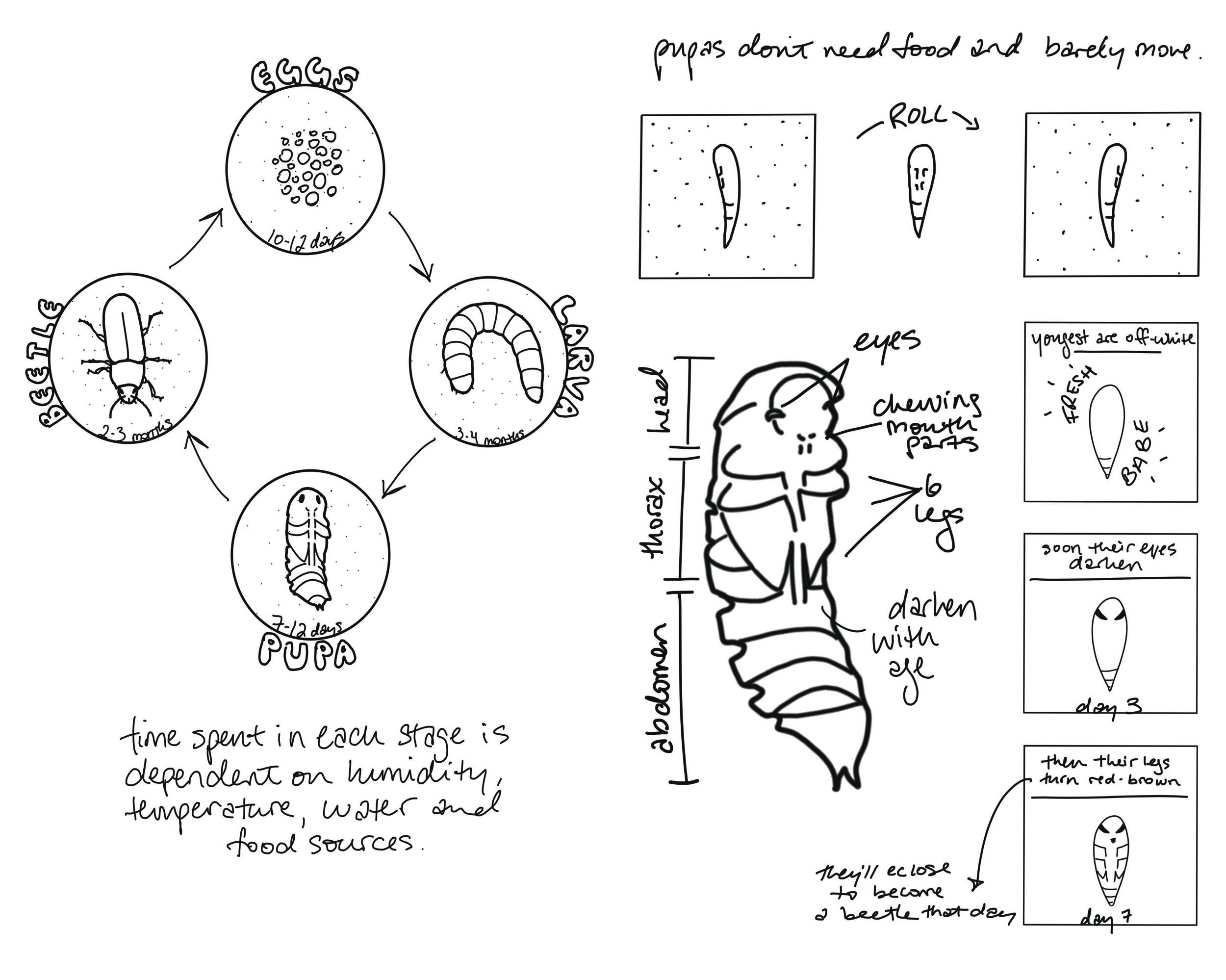
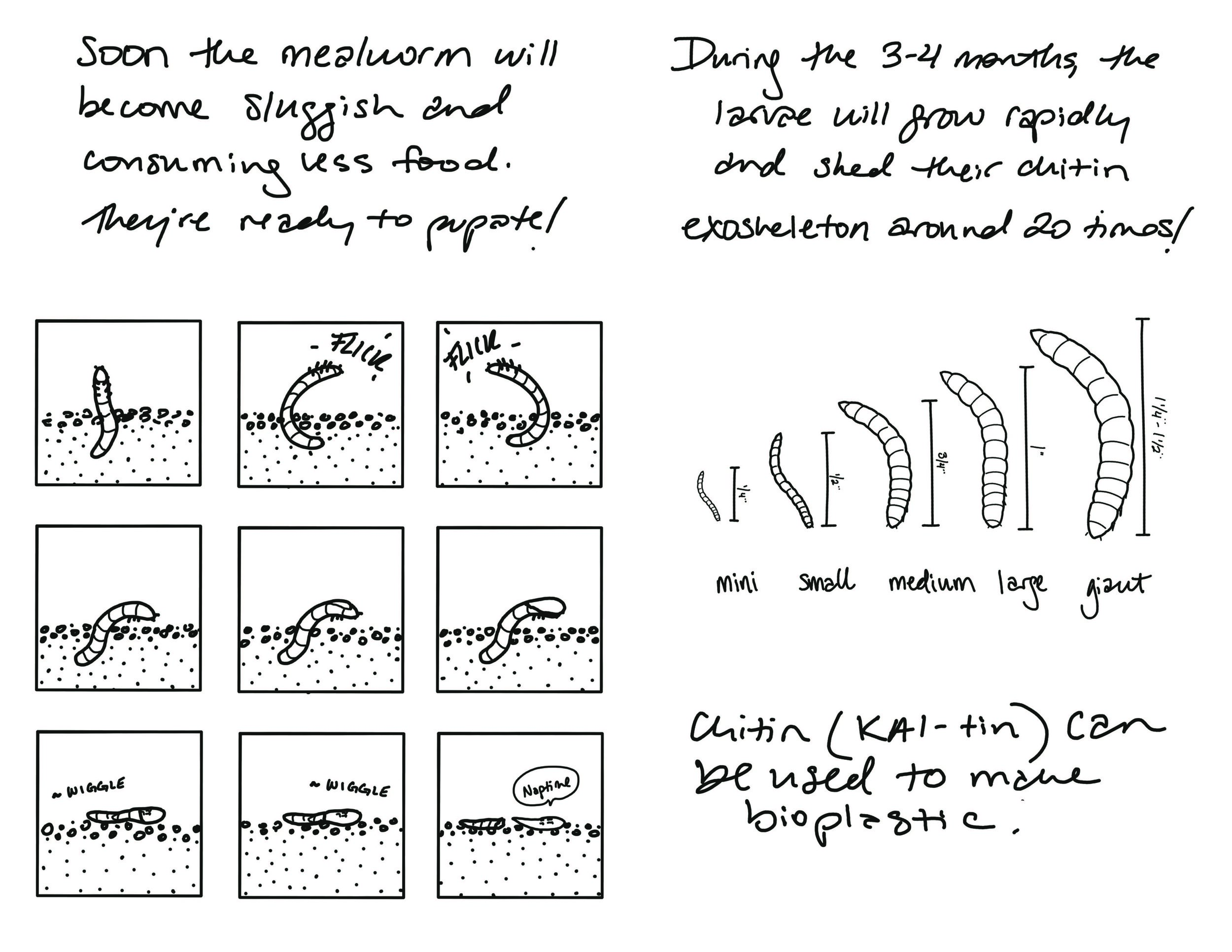
For the gallery display, I decided to keep my display simple and interactive. I had a poster of a sketch I drew at the beginning of my research which resonated with me still later on. The table in front had my comics displayed and for the taking, magnifying glasses, and tweezers for inspecting the various stages of the beetle’s lifecycle as well as the styrofoam and plastic bags they consumed. To the right of the table, open and displayed, were my hundred? thousand? little bugs which generated quite the attention from the children.
About Degrade:
Degrade is a plastic degradation system utilizing the appetite of Tenebrio molitor, the Darkling Beetle. Plastic bags and styrofoam are unable to be processed through single-stream recycling, but can be digested by these insects. As proven by Stanford, the mealworms not only consume the material, but have the ability to biodegrade the plastic and produce compostable waste. While styrofoam is said to take a million years to breakdown, Degrade can process the plastic in weeks.

